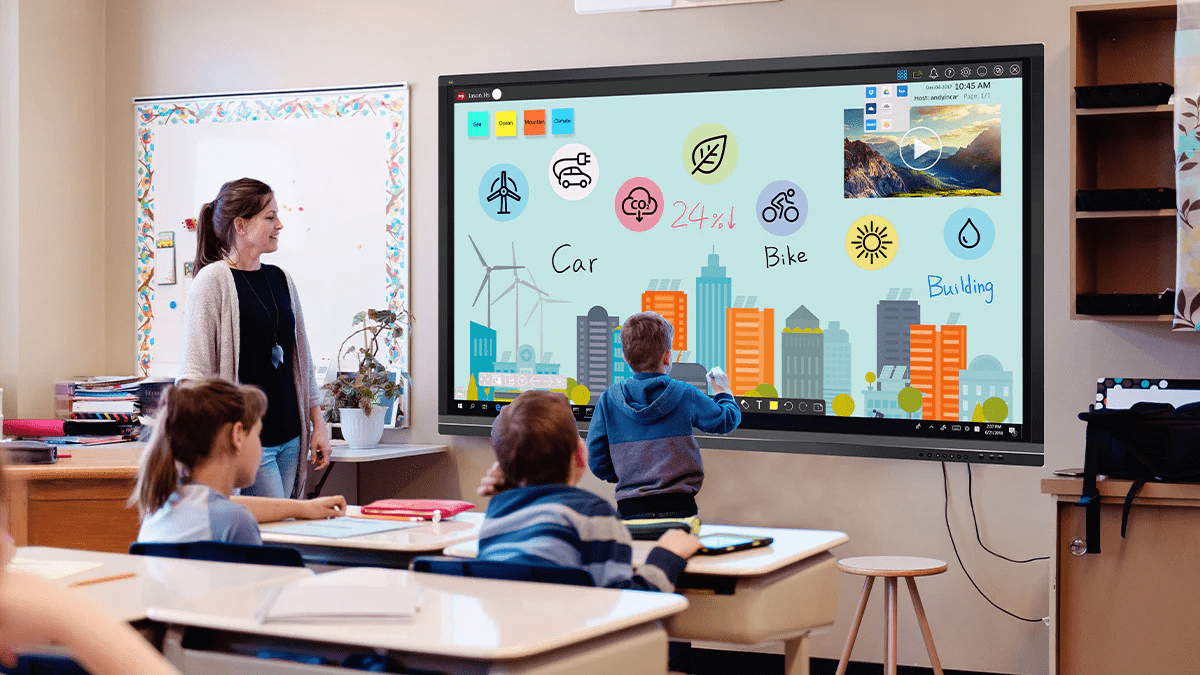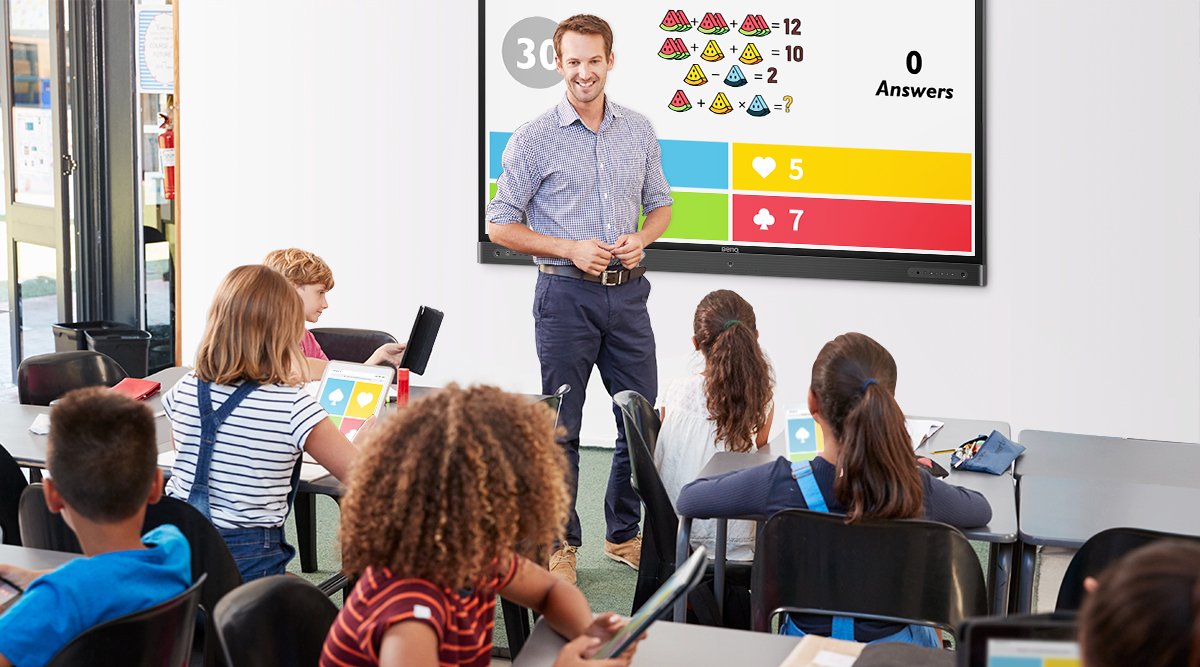Office Address
10-170/Coconut trees street, Venkatarayapuram
Phone Number
9014634327
10-170/Coconut trees street, Venkatarayapuram
9014634327

Interactive flat panels are fast becoming the preferred display solution for businesses and educational institutions alike. Also known as interactive displays or interactive panels, these panels offer a wide range of benefits over traditional display solutions, including enhanced collaboration, engagement, and efficiency. In this blog, we'll take a closer look at what interactive flat panels are, their benefits, and why they are gaining popularity in the education and business sectors. An interactive flat panel (IFP) is a display solution that incorporates a touch-sensitive screen to enable interactivity with on-screen content. These panels can be wall-mounted or placed on a stand, and they come in a variety of sizes ranging from 55 inches to 98 inches. Some interactive flat panels also offer built-in audio and video capabilities, making them an all-in-one solution for video conferencing, presentations, and other collaborative tasks. Cornea interactive flat panel comes with all latest technology.
Interactive flat panels are typically used in classrooms and meeting rooms, but they are also used in other settings such as trade shows, museums, and exhibitions. They are designed to offer a collaborative and interactive environment that enhances communication, productivity, and learning.
Interactive flat panels are revolutionizing the classroom environment by making learning more interactive, engaging, and fun. They allow teachers to create interactive lessons, quizzes, and activities that capture students' attention and encourage participation. With an interactive flat panel, teachers can present material in a variety of formats, including images, videos, and text, and they can annotate content in real-time to highlight key points.
Interactive flat panels also offer a range of tools and features that support different learning styles, including touch-based interaction, multi-user support, and the ability to switch between different input devices. For example, teachers can use a stylus, a finger, or a digital pen to write on the screen, and students can use their own devices to collaborate and share content.
One of the most common uses of Interactive Flat Panel is in smart classrooms. Teachers can write, draw, annotate, and play multimedia content all from a single screen. Integration with platforms like Google Classroom, MS Teams, and Zoom makes learning seamless and hybrid-friendly.

With built-in cameras, microphones, and video conferencing software, IFPs facilitate live classes, recording of lectures, and interactive
Q&A sessions—essential in today’s post-pandemic learning model.
Students can work in groups, use the IFP for brainstorming, showcasing presentations, or conducting real-time research during class.
Teachers can conduct live quizzes, polls, and assessments using IFP tools, giving instant feedback and fostering participation.
In the modern digital world, where engagement, efficiency, and clarity are paramount, technology continues to evolve the way we communicate, teach, and collaborate. One such game-changing innovation is the Interactive Flat Panel (IFP). As classrooms and conference rooms transform into interactive hubs, the uses of Interactive Flat Panel are multiplying across industries.Companies like Digital Live Services are at the forefront of this evolution, offering advanced, tailored solutions that integrate IFPs seamlessly into your daily workflow—whether you’re in education, business, or public service.
